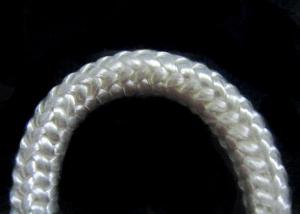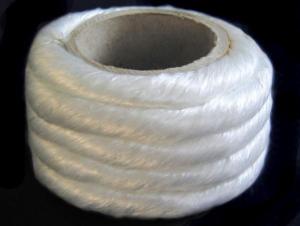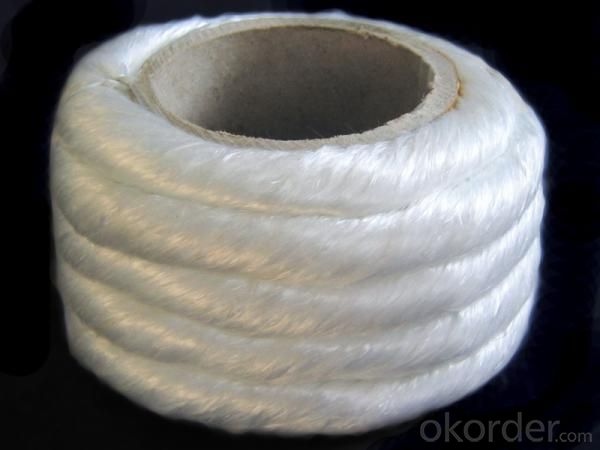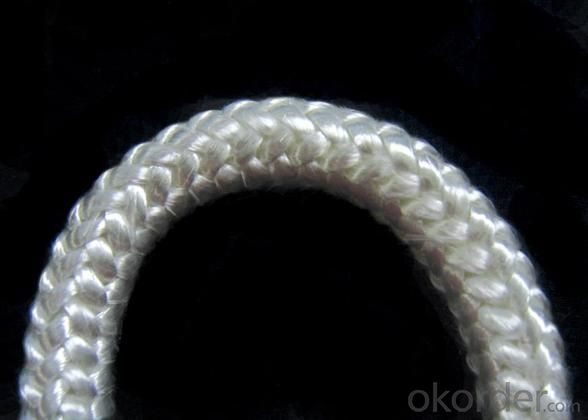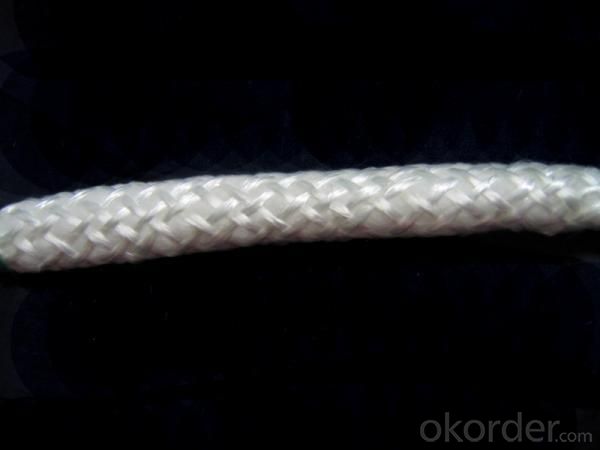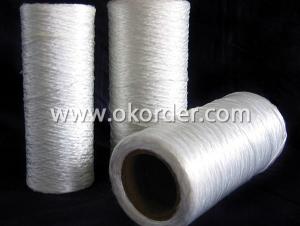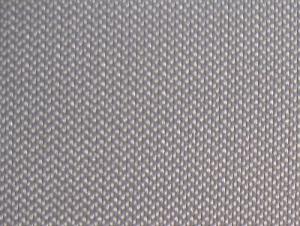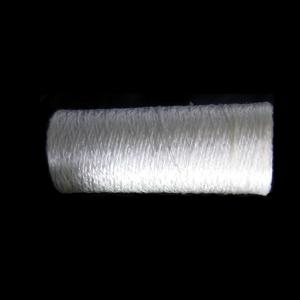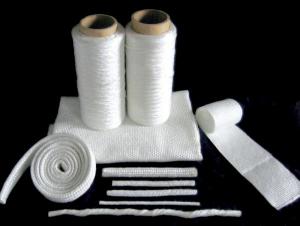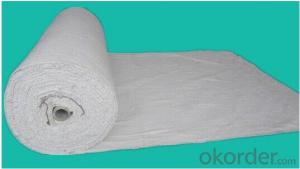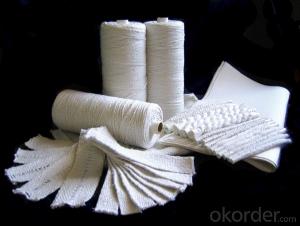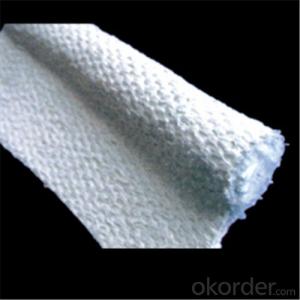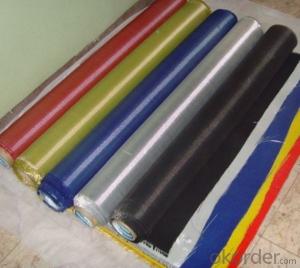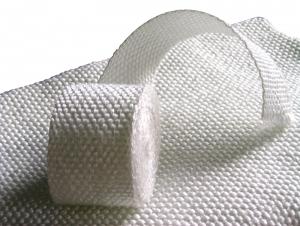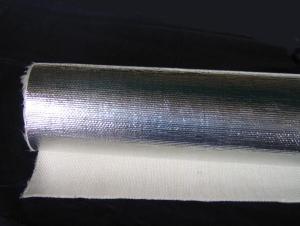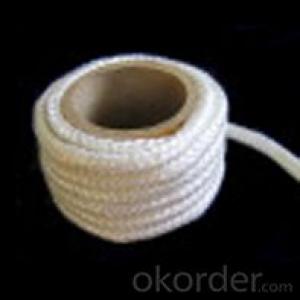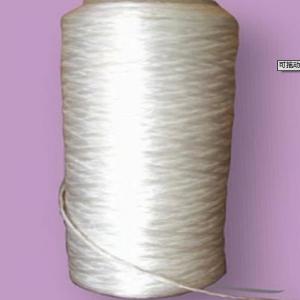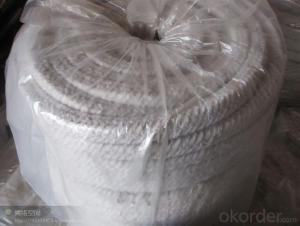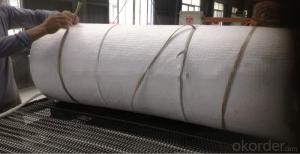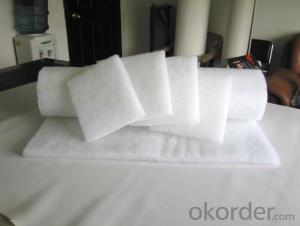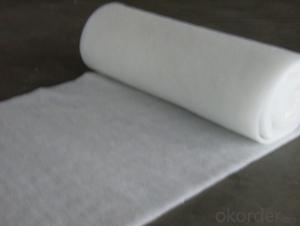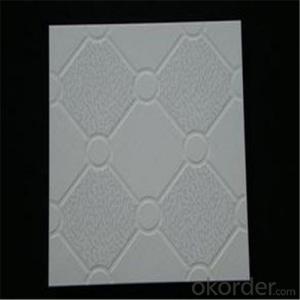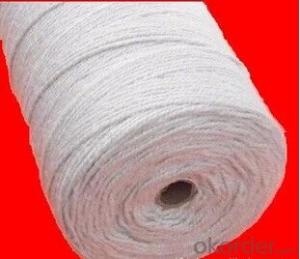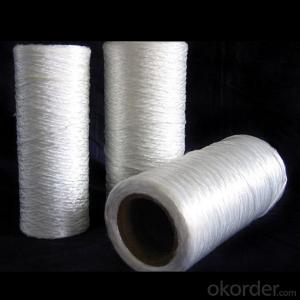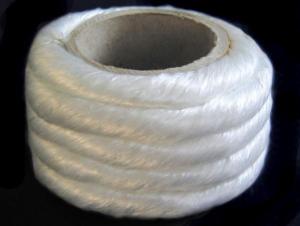Glass Fiber Textile Textured Fiberglass Rope
- Loading Port:
- China Main Port
- Payment Terms:
- TT or L/C
- Min Order Qty:
- 10 Tons kg
- Supply Capability:
- 2*20FCL Per Month kg/month
OKorder Service Pledge
OKorder Financial Service
You Might Also Like
Brief Description
Fiberglass Texturized Rope This rope has two kinds of structure.
One is braided rope which consists of parallel texturized threads, strips or ropes, with texturized yarn braided around them.
Another is twisted rope which is made bya certain number
Product Attributes
Type:Other Heat Insulation Materials
Place of Origin:China (Mainland)
Detailed introduction to Fiberglass Textured Rope:
Fiberglass Texturized Rope
This rope has two kinds of structure. One
is braided rope which consists of parallel
texturized threads, strips or ropes, with
texturized yarn braided around them.
Another is twisted rope which is made by
a certain number strands of texturized
yarn twisted tightly together to form a
rope with high tensile strength.
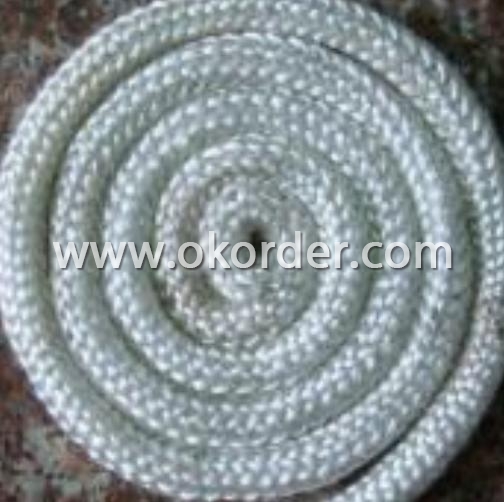
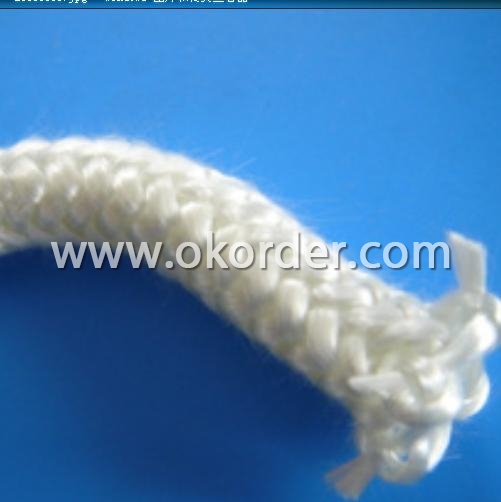
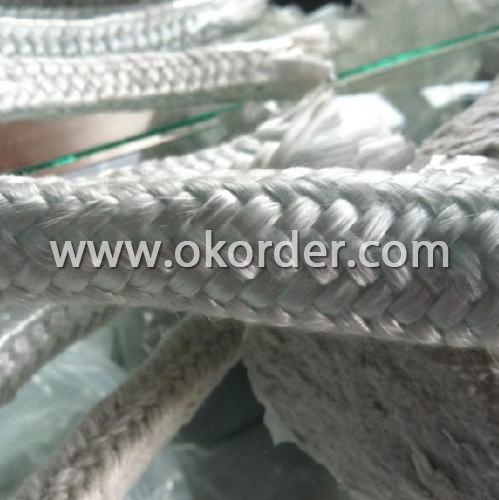
- Q: Can glass fiber textiles be used in industrial filters?
- Glass fiber textiles are capable of being utilized in industrial filters. With their exceptional filtration properties, these textiles are well-suited for a wide range of industrial filtration applications. They have the ability to efficiently capture and eliminate fine particles, dust, and other impurities from air, liquids, and gases. Furthermore, they exhibit a high filtration efficiency and are capable of withstanding harsh chemical environments and high temperatures. This makes them a viable option for industries including automotive, aerospace, pharmaceuticals, and manufacturing. Additionally, glass fiber textiles are renowned for their durability, low maintenance requirements, and extended service life, thereby offering a cost-effective solution for industrial filters.
- Q: What do 02 and 04 of fiberglass cloth refer to?!
- According to the composition of glass, roving can be divided into E-GLASS alkali free glass roving and alkali glass roving in C-GLASS.
- Q: What are the disadvantages of using glass fiber textile?
- Glass fiber textiles present several drawbacks when used in various applications. To begin with, their brittleness makes them prone to breaking under high stress or impact, rendering them unsuitable for situations where flexibility or resistance to breakage is crucial. In addition, glass fiber textiles exhibit poor UV radiation resistance. Prolonged exposure to sunlight can cause the fibers to deteriorate and weaken, thereby diminishing their overall strength and durability. Consequently, their utility in outdoor applications, particularly those requiring long-term exposure to sunlight, is limited. Another disadvantage arises from the relatively high cost of glass fiber textiles compared to other textile materials. The intricate and energy-intensive manufacturing techniques involved in producing glass fibers contribute to their higher price, rendering them less economically viable for certain applications. This is especially true when more affordable alternative materials are readily available. Moreover, the sharp edges and rough surface texture of glass fiber textiles make them challenging to work with. This poses safety risks during handling and installation, necessitating the use of protective equipment and careful handling practices. Lastly, glass fibers are non-biodegradable, meaning they do not naturally decompose over time. This raises environmental concerns as the disposal and waste management of glass fiber textiles can be difficult and potentially harmful to the environment. In conclusion, while glass fiber textiles possess advantageous properties such as high strength and chemical resistance, they also have significant disadvantages including brittleness, UV degradation, high cost, difficult handling, and environmental concerns. These factors must be carefully considered when selecting the appropriate material for a specific application.
- Q: Can glass fiber textiles be used in the electronics industry?
- Glass fiber textiles, which are also called fiberglass textiles, find utility in the electronics industry. Owing to their exceptional electrical insulation properties, they prove suitable for various applications within this industry. Specifically, they serve as insulation material in electronic components like printed circuit boards (PCBs) and electrical cables. The great electrical resistance of glass fiber textiles not only prevents short circuits but also guarantees the secure and dependable operation of electronic devices. Moreover, they offer thermal insulation and mechanical strength, safeguarding electronic components against heat, vibrations, and physical harm. Consequently, glass fiber textiles are extensively employed in the electronics industry to enhance the performance and endurance of electronic devices.
- Q: Can glass fiber textile be used in sporting equipment?
- Yes, glass fiber textile can definitely be used in sporting equipment. Glass fiber textile, also known as fiberglass, is a lightweight and durable material that is commonly used in various industries, including sports equipment manufacturing. Its unique properties make it an ideal choice for sporting equipment such as tennis rackets, golf clubs, hockey sticks, and even bicycles. One of the key advantages of using glass fiber textile in sporting equipment is its high strength-to-weight ratio. It is stronger than steel and can be molded into different shapes and sizes, allowing for the creation of lightweight yet sturdy equipment. This makes it easier for athletes to handle and maneuver their equipment, enhancing their performance. Additionally, glass fiber textile is known for its excellent tensile strength and flexibility. It can withstand high impact forces and provide a responsive feel, which is crucial for sports that require quick and precise movements. The material also has good vibration dampening properties, reducing the impact on the athlete's body and improving overall comfort. Furthermore, glass fiber textile is resistant to corrosion, moisture, and extreme temperatures, making it suitable for use in various weather conditions. It is also relatively cost-effective compared to other high-performance materials, making it an attractive option for both professional athletes and recreational sports enthusiasts. In conclusion, glass fiber textile can indeed be used in sporting equipment due to its strength, flexibility, durability, and cost-effectiveness. Its unique properties make it a popular choice among manufacturers and athletes alike, contributing to the advancement of sports equipment technology.
- Q: What are the limitations of glass fiber textiles?
- Glass fiber textiles have several limitations. Firstly, they are brittle and can break easily under high impact or stress, making them less suitable for applications that require flexibility or durability. Additionally, glass fiber textiles have poor resistance to high temperatures, which can cause them to weaken or lose their structural integrity. They are also prone to abrasion and can be easily damaged by sharp objects or rough handling. Lastly, glass fiber textiles can be less comfortable to wear or use due to their stiffness and lack of breathability.
- Q: Can glass fiber textiles be used in art?
- Certainly, art can certainly make use of glass fiber textiles. Fiberglass, which is another name for glass fiber textiles, is incredibly versatile and can be applied in a range of artistic expressions. This material boasts strength, lightness, and exceptional tensile strength, thereby rendering it suitable for crafting sculptures, installations, and even wearable art pieces. One common application of glass fiber textiles in art is seen in the formation of sculptures. With fiberglass, artists can fabricate intricate and highly detailed sculptures that may prove challenging to produce using alternative materials. Additionally, the material's robustness and durability ensure that the artwork will endure the test of time, making it particularly suitable for outdoor installations. Moreover, glass fiber textiles can be easily molded into any desired shape or form, enabling artists to experiment and push the boundaries of their creativity. Be it abstract sculptures, lifelike figures, or even functional art pieces like furniture, fiberglass affords artists limitless possibilities. Furthermore, glass fiber textiles can be combined with other mediums to add texture and dimension to artworks. Artists can incorporate fiberglass into paintings, mixed media pieces, or even textile art to create textures that are distinctive and visually engaging. Furthermore, glass fiber textiles are resistant to moisture and weather conditions, thereby making them appropriate for both indoor and outdoor artworks. This versatility empowers artists to explore diverse environments and settings for their creations. In conclusion, glass fiber textiles represent a valuable and versatile material that can be employed in numerous art forms. Whether sculpting, installing, or creating, the strength, durability, and moldability of fiberglass make it an exceptional choice for artists who seek to produce innovative and long-lasting artworks.
- Q: Are glass fiber textiles suitable for automotive applications?
- Yes, glass fiber textiles are suitable for automotive applications. Glass fiber textiles are known for their high strength-to-weight ratio, making them an ideal choice for automotive components that require lightweight yet strong materials. They offer excellent resistance to heat, chemicals, and abrasion, which is crucial in the demanding environment of automotive applications. Glass fiber textiles are also highly flexible and can be easily molded into complex shapes, providing design flexibility for automotive manufacturers. Additionally, glass fiber textiles have good insulation properties, which can be beneficial in reducing noise and vibrations in vehicles. Overall, the properties of glass fiber textiles make them a suitable choice for various automotive applications such as interior panels, seat covers, headliners, trunk liners, and engine components.
- Q: Can glass fiber textiles be used for reinforcement in wind turbine blades?
- Yes, glass fiber textiles can be used for reinforcement in wind turbine blades. Glass fibers are strong, lightweight, and have excellent tensile strength, making them suitable for reinforcing the composite materials used in wind turbine blades. These fibers enhance the structural integrity and durability of the blades, allowing them to withstand the stress and strain experienced during operation.
- Q: What are the different surface treatments available for glass fiber textiles?
- Glass fiber textiles offer a range of surface treatments, each serving a specific purpose and providing unique advantages. Some of the most commonly used treatments include: 1. Sizing: During the manufacturing process, a protective coating known as sizing is applied to the glass fibers. This coating enhances the textile's handling and processing characteristics, ensuring better control and stability during weaving or knitting. 2. Silane treatment: By applying a silane coupling agent to the glass fibers, the adhesion between the fibers and various resin systems, such as epoxy or polyester, is improved. This treatment enhances the overall strength and durability of the composite material. 3. Coating: Coating involves applying a layer of protective material, such as acrylic, polyurethane, or silicone, to the glass fiber textile. This adds additional properties like water resistance, UV resistance, or flame retardancy. 4. Laminating: A layer of film or fabric is bonded to the surface of the glass fiber textile in the laminating process. This treatment provides extra strength, stiffness, or decorative effects to the textile, as well as improved resistance to chemicals or abrasion. 5. Dyeing or printing: Dyes or pigments can be used to add color or patterns to glass fiber textiles. Dyeing can be done during manufacturing, while printing involves applying color or designs onto the textile's surface. These treatments enhance the textile's aesthetic appeal and visual appeal. In summary, the various surface treatments available for glass fiber textiles aim to enhance their performance, durability, and appearance. The choice of treatment depends on the specific properties and application requirements of the textile in question.
Send your message to us
Glass Fiber Textile Textured Fiberglass Rope
- Loading Port:
- China Main Port
- Payment Terms:
- TT or L/C
- Min Order Qty:
- 10 Tons kg
- Supply Capability:
- 2*20FCL Per Month kg/month
OKorder Service Pledge
OKorder Financial Service
Similar products
Hot products
Hot Searches
Related keywords
